Building huge shoulders is not an easy task and there are simply no shortcuts. But on the other hand, strong shoulders are definitely something that can be developed and can grow faster if you do the right moves.
The anatomy of the shoulders is genetically determined and people with better shoulder genetics will get better results faster than those with narrower shoulders, unfavourable limb length and poor muscle attachment (which biomechanically determines the efficiency of the muscles). But this does not mean that those who are genetically inferior cannot train to get into good shape - they just need to put in the extra effort to compensate for their shortcomings and weaknesses, and most difficulties can be overcome by smart training.
The efficiency of a particular movement also depends on the other movements in the training programme, the frequency of the training and whether there is enough recovery time. If you train too often, over-train certain muscles or do not allow your body to rest properly after a hard workout, then muscle growth may stagnate.
It is possible to do the best movements, but if you do not provide the right environment for growth, the muscles will not grow well on their own. Creating the perfect training plan requires knowledge and experience, so don't worry if you're not ready yet - here's one for the little ones just like you.

1. Rope reverse flyes
The Reverse Fly is an isolation movement that targets the upper back and shoulders to promote muscle growth in both areas. Its main feature is that it effectively stimulates the posterior deltoid bundle, which does not usually get attention in general shoulder training, even though the posterior bundle is a key part of achieving muscle thickness.
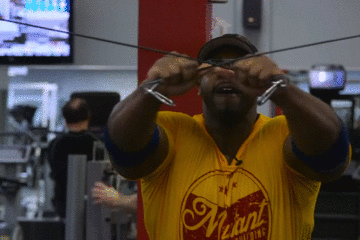
If your goal is to train balanced shoulders, the circumference of the posterior bundle must match the anterior and middle bundles, so it is good to emphasise the reverse flyes in your routine. Based on the fact that the ropes continue to provide constant tension to the target muscle group, the posterior fasciculus does not rest during the process, thus promoting growth.
Keeping your arms at shoulder height, spread your arms out to the sides and feel the posterior deltoid bundle engage in the movement as you pull the handles to the other side. Keep your arms fully extended as you do this. When the arms are fully extended, reverse the movement and return the handles to the starting position.
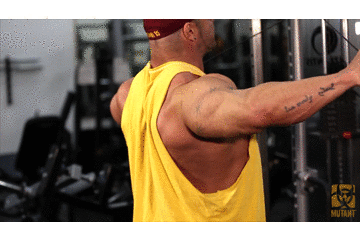
2. Prone Dumbbell Side Planks
The overhead single arm side planks are better than the two side planks because it allows you to apply more pressure on each side, but this is not true. The unilateral movement increases the chance of borrowing force and erasing the benefits of this movement with the help of lumbar rotation. Also doing this movement with both arms will eliminate this borrowing and put more pressure on the posterior deltoid bundle, giving a more balanced overall body shape.
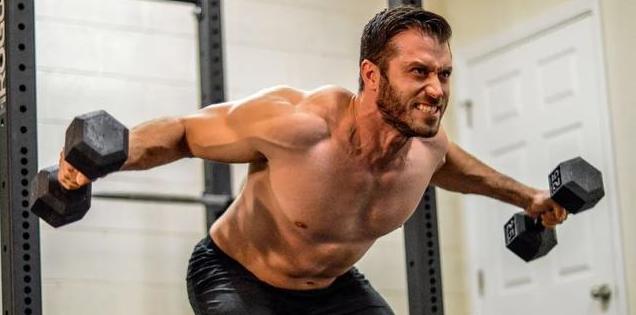
Target muscles: Posterior deltoid bundle and upper back muscles.
How to do it: Hold a dumbbell in each hand, palms facing each other, knees slightly bent, while keeping your back and chest straight.
Focusing on a point on the floor in front of you, bend your hips with your torso almost parallel to the floor and fix your elbows in a slightly bent position. Raise the dumbbells upwards in an arc to the sides until the upper arms are parallel to the floor. Squeeze for a second at the highest point, then lower the dumbbells by reversing the movement.
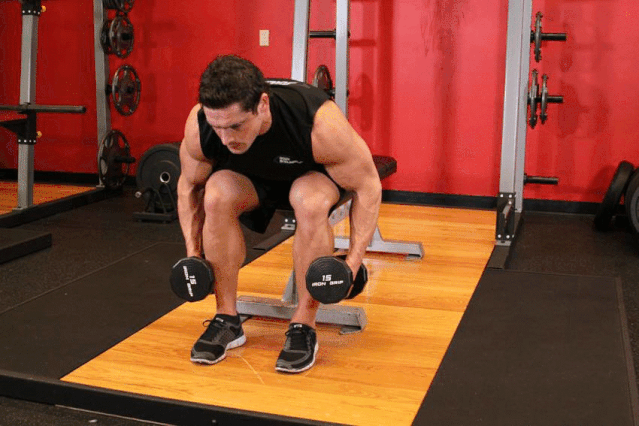
3. One-arm rope side planks
If you want to build broad, strong shoulders, then side planks should be a major part of your routine. Correctly performed, the one-arm rope lateral planks act as a key isolation movement that helps stimulate the middle deltoid bundle, which is a must if you want to maximise the thickness of your deltoids.
Overhead presses will greatly stimulate the anterior deltoid bundle, but will not adequately stimulate the middle and posterior bundles. In order to train complete shoulders, each head must be fully worked and this movement will strengthen the middle fascicle which you have neglected.
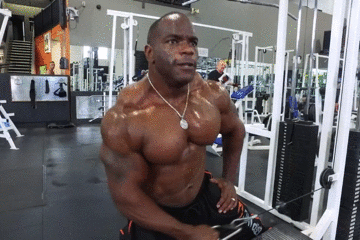
Target muscle: Middle deltoid bundle
How to do it: Set the pulleys to low and select the weight to be used. Stand to the side of the apparatus with your feet shoulder-width apart, grab the right-hand handle with your left hand and place your non-training hand on your hip. Stand straight, abs tight, shoulders back, move elbows and hands in the same plane and lift in a wider arc to the side of the body.
With the arms above shoulder height, pause for a second to squeeze the deltoids and then lower the rope in a reverse motion. Complete the required number of reps, then grab the left handle with your right hand and repeat with your right arm. Remember that posture is more important than weight, so keep your elbows up throughout the movement and do not open your hands as you move the weight to ensure maximum activation of the mid-bundle.

4. Explosive overhead press
The explosive overhead press allows you to complete a greater weight than a standard shoulder press, combining a large overhead push with an upward impulse, but at the same time is not as difficult to master as the borrowed jerk. Unlike most other overhead upper body movements, this movement requires power to be generated from the legs, thus allowing you to utilise a larger, more challenging load.
Training a tremendous amount of upper body strength, the explosive overhead press will train the rotator cuff muscle groups and strengthen the abs, providing a great improvement to the shoulder press and bench press. Doing such movements will ensure that the muscles are as strong as they look.

Target muscles: deltoids, obliques, triceps.
How to do it: Stand with your feet shoulder-width apart, grab the barbell and hold it squarely with a grip wider than shoulder-width apart, palms up and elbows forward. Pull the barbell above your shoulders and keep your elbows close to your body, then lower your hips and bend your knees into a half-squat position. Explosively drive your legs and hips upwards, extending your arms and pushing the weight over your head with your elbows fully extended.
Make sure the lower back does not hyperextend in the locked position and keep the spine in a neutral position throughout the movement. Hold at the highest point for a few moments, then return the barbell to rest at the upper pecs.
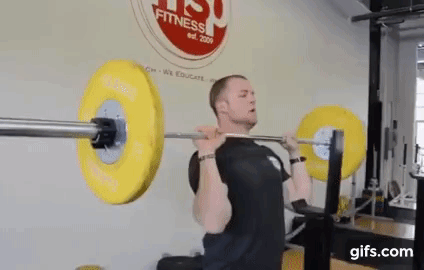
5. Seated Barbell Shoulder Press
The barbell shoulder thrust is a very effective upper body movement that can be used to increase the strength and size of the shoulder muscles and when performed in a seated position it allows for better isolation of the shoulder by limiting the engagement of other muscles.
For proper deltoid development, the shoulder press is an absolute must, it is challenging, intense and has great lifting properties to other fitness movements. As a compound movement, the barbell shoulder press allows for really heavy weights and overloads in a safe manner, allowing for more muscle to be gained in the long term.
It activates the three heads of the deltoids and the shoulder press is great for building muscle and strength throughout the shoulder area, maximising the strength, while also training the obliques and upper pecs to some extent.
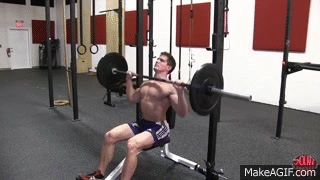
Target muscles: anterior deltoid, middle and posterior bundles
How to do it: Find a barbell push-up machine or an upward incline bench and place it in the middle of the rack with the barbell just above head height. Sit up straight with your feet flat on the floor, keep a slight arch in your lower back and hold the barbell in a rotated forward grip, wider than shoulder distance, elbows down and out.
Raise the bar to shoulder level. This is the starting position. Inhale and squeeze hard on the training muscles, pushing the barbell straight up to the elbow lock position in a slow, controlled movement. Exhale and repeat, controlling the barbell and lowering it into the starting position. Avoid opening your elbows and keep your back straight throughout the movement. Also, make sure you use a full range of motion.
Bonus tip: You can also use a pair of dumbbells to complete this movement. It is recommended to rotate the equipment regularly over a period of months. The dumbbell press allows the arms to extend a little to the sides, thus making the middle deltoid bundle more active, while the barbell press puts more emphasis on the front bundle.
The second main difference between dumbbell push-ups is that when you use dumbbells, you cannot do the same weight as a barbell; on the other hand, dumbbells are much more effective in preventing muscle imbalances.
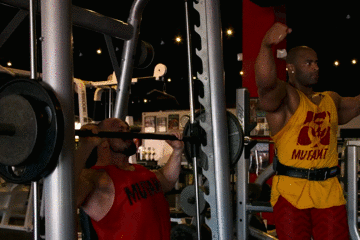
6. Dumbbell side planks
Side planks help to increase shoulder mobility while also strengthening the muscles that support and stabilise the shoulders. The side planks also enhance core stability by ensuring that the core muscles are properly supported during the side planks.
The reason why dumbbell side planks are great for shaping your shoulders is that they help to make your shoulders appear wider, thus creating a noticeable contrast between your shoulders, lats and hips.
In fact, it is one of the most abused movements in the gym, with too many people relying solely on the dumbbell side planks to work their shoulders. It's too easy to borrow strength for this movement. The side planks are still an important movement for building broad, strong shoulders and putting a lot of tension on the middle deltoid bundle.
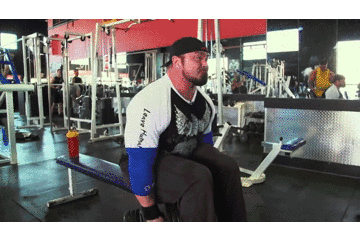
Target muscle: Middle deltoid
How to do it: Stand with your feet shoulder-width apart, core tight, shoulders back and hold dumbbells in both hands, keeping them neutral. Adjust your grip so that your thumbs are a little lower than your pinkies, which will make the middle bundle work harder.
Keeping the torso in a static position (avoiding borrowing), lift the dumbbells in an arc to the side with a slight bend in the elbows and lean the hands slightly forward. Elbows and hands should move together on the same plane. Raise the dumbbells above the shoulders, pause for a second and slowly lower the load.
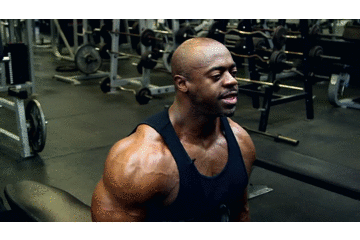
Popular Articles
-
Why fitness to include strength training?6 benefits to tell you why
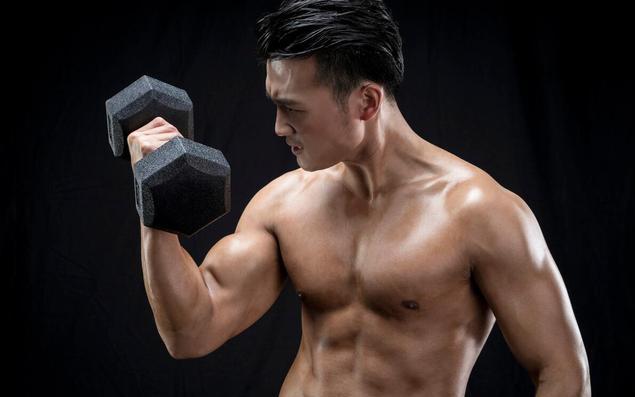
-
 The world's most bizarre house: The Pearl of the Grasslands Yurt
The world's most bizarre house: The Pearl of the Grasslands YurtJul 02, 2025
-
 Want to be comfortable at home, add these 4 good things, beautiful and practical, full of happiness
Want to be comfortable at home, add these 4 good things, beautiful and practical, full of happinessJul 02, 2025
-
 Fat loss is not good enough? 4 points to brush up your fat and help you get in shape
Fat loss is not good enough? 4 points to brush up your fat and help you get in shapeJul 02, 2025
-
 6 moves to train every other day to get a waistline.
6 moves to train every other day to get a waistline.Jul 02, 2025
-
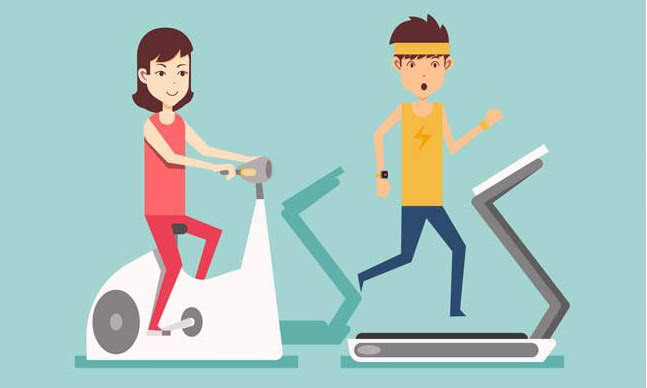 Treadmill PK elliptical machine, which is more fat burning?
Treadmill PK elliptical machine, which is more fat burning?Jul 02, 2025







Comments
23 years ago
Thx3 years ago
Thx